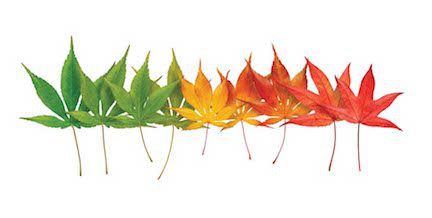A new season for baby boomers: Mattress manufacturers would be wise to keep this consumer generation in mind as they shift into retirement
BY JULIE A. PALM

Giving birth to consumerism
Born after World War II during a time of unprecedented peacetime prosperity, the baby boomers helped build the globe’s largest, strongest middle class, essentially creating the consumerism that has long underpinned the U.S. economy. If you’ve been a successful mattress manufacturer, you have, at least in part, the boomers and their penchant for purchasing to thank for that.

As we said at the start, another monster-size generation—the millennials—has begun peeling attention away from the boomers. Born 1981 to 1997, there currently are 75.3 million millennials in the United States—actually more than their baby boom counterparts, which, because of mortality, are down from their peak of 79.9 million in 1999 to “just” 74.9 million today. Those 74.9 million people are not to be written off. The boomer generation will continue to impact your business—in ways both good and not-so-good—for years to come.
Fifty shades of gray
The U.S. Census Bureau defines baby boomers as individuals born in the United States from 1946 to 1964. The “boom” was the result of two demographic trends. In the early part of the 20th century, U.S. birth rates—except for a blip following World War I—had been declining steadily. Then came the end of World War II. “In the first year of the baby boom, 1946, rates increased to 24 births per 1,000 population, and in 1947 they peaked at 26.5,” according to “The Baby Boom Cohort in the United States: 2012 to 2060,” a report from the Census Bureau issued in May 2014. But it wasn’t only that fertility rates rose. What really created the unprecedented population explosion was the length of time over which large numbers of babies were born: Birth rates remained high for nearly two decades.
Demographers and marketers often break the boomers into two groups who are in different phases of their lives: Leading-edge boomers were born from 1946 to 1955 and now are age 60 to 69; trailing-edge boomers, born from 1956 to 1964, are 51 to 59.
As this generation gets older, the entire country is aging along with it. The first boomers began turning 65 in 2011. “By 2029, when all of the baby boomers will be 65 years and over, more than 20% of the total U.S. population will be over the age of 65,” according to the Census Bureau report. “Although the number of baby boomers will decline through mortality, this shift toward an increasingly older population is expected to endure. By 2056, the population 65 years and over is projected to become larger than the population under 18 years.” That demographic shift toward an older population is unprecedented in U.S. history.
WHERE SENIOR BOOMERS LIVE
States with the highest percentage of people age 65 and older
1. Florida
2. West Virginia
3. Maine
States with the lowest percentage of people age 65 and older
1. Alaska
2. Utah
3. Texas
Source: U.S. Census Bureau
With aging comes retirement. The Great Recession forced many boomers to delay or change their retirement plans for financial reasons. Others continue to work full or part time because they enjoy what they do or want to stay active and engaged. But boomers still retire—and like everything else related to this generation—when they do, they do so in enormous numbers.
“The financial crisis wiped away billions in retirement savings, forcing many Americans to work longer than planned. But the stock market has since rebounded, and there are signs that more Americans are at last feeling confident enough to leave the workforce,” writes Ben Casselman in a May 2014 article for FiveThirtyEight.com. “Roughly 17% of baby boomers now report that they are retired, up from 10% in 2010.”
Some 10,000 boomers will retire every day—every day—during the next 19 years, says Pam Danziger, president of Unity Marketing, a marketing consulting firm in Stevens, Pennsylvania.
Retirement brings with it enormous changes in consumer behavior, and manufacturers are going to have to relate to the demographic in new ways, including incentivizing boomers to continue regularly replacing their mattresses during a time in life when they may be more likely to simply “make do” with products they already own.
“Simply put, retirees don’t contribute as much to the economy as workers do. They don’t produce anything, at least directly. They don’t spend as much on average,” Casselman says.
In a recent newsletter, Danziger explains it this way: “Retirement is a pivotal time in a consumers’ life, as it marks a slowdown in spending and shift in purchasing behavior.”
Boomers still buy, but buy differently
Some products and industries are more likely to be hurt by boomers’ move into retirement than others, says Peter Grandich, a financial adviser and commentator.
“Baby boomers on a fixed income will ask themselves, ‘Do I buy this $400 autographed football, or do I buy groceries and medication?’ ” he wrote in a 2010 blog post on Demodirt.com.
The Census Bureau puts the average income of leading-edge boomers at just $37,200. But the poverty rate for people 65 and older is lower than other age groups, and the percentage of homeowners among those 65 and older has remained steady at 81%—even after the Great Recession.
What does all this mean for mattress manufacturers? For starters, you’ll need to position sleep products as necessities—not luxuries—that will measurably improve boomers’ lives. And you’ll need to give them a reason to buy, particularly by highlighting the value of the products you sell.
“Ask any boomer and they will tell you that getting the most value for their dollar is most important. This doesn’t mean it’s the least expensive or of poor quality. Quite the contrary: Boomers appreciate value; if it makes sense and speaks to their personal style and will live up to their expectations, boomers will buy it. Seventy-seven percent of boomers will purchase something based on its value,” according to the Fona International report. However, when it comes to home furnishings, note that boomers are a bit more price-conscious than their younger counterparts, the millennials, according to a Synchrony Financial “New Normal” consumer survey released in April 2012.

“Ensure traditional advertising talks to the boomer segment. A media campaign can be fresh and innovative in its approach, but should be careful not to alienate this key segment,” cautions a 2014 report from Synchrony Financial, “Balancing Multi-Generational Retail Strategies: Winning over Millennials Without Losing Boomers.” In other words, engage—but do not offend—your boomer customers.
And while millennials are watching “TV” shows on anything but actual televisions, boomers remain committed to the traditional TV set.
“They are still the TV generation, and chances are good that a TV commercial initiated their interest in that product,” according to a 2013 report from eMarketer, “Baby Boomers in the Marketplace: How the ‘Ever Young’ Generation Approaches Shopping, Health and Retirement.”
Boomers do use newer technologies such as tablets and smartphones, and, like younger consumers, research and purchase products online, though in fewer numbers. Some 79% of U.S. Internet users ages 60 to 65 cite shopping among their online activities, according to a March 2013 survey for UnitedHealthcare conducted by GfK Roper Consulting, and two-thirds of Internet users ages 50 to 69 “strongly” agree with the statement, “When making a big or expensive purchase, I search online to compare prices across stores or retailers,” according to a May 2013 poll for Infosys conducted by KRC Research and Vanson Bourne.
Because of this, mattress manufacturers and their retail partners would be wise to “keep your website interesting and engaging,” suggests the Synchrony Financial “Balancing Multi-Generational Retail Strategies” report. “Deepen the customer experience of the boomer by including wish lists, special offers, flash sales and customer reviews.”
A tricky task for the marketing team
As boomers age, they become increasingly tricky for marketers to reach. Sure, they’re getting older and may have different needs, but they don’t necessarily want to be reminded of it. In 2013, Amazon.com launched “50+: Active and Healthy,” a store-within-a-store that pulled together items the online retailer thought would be of interest to boomers. It was not a raging success, perhaps because “Medical Supplies” and “Incontinence” products were included right along with “Travel & Leisure.” Today, the section is essentially buried on the site, though a specific search of the term “50+: Active and Healthy” will bring up an assortment of boomer-friendly products.
Matthew Boyle examined this marketing quandary in a September 2013 article for Bloomberg.com. In “Aging Boomers Stump Marketers Eyeing $15 Trillion Prize,” Boyle writes about a multiyear project at the University of Cincinnati called Live Well that brought together students, faculty and corporations, including Procter & Gamble, to develop products for consumers over age 50.
“P&G and a dozen corporate partners like Boeing Co. and Oreo cookie maker Mondelez International Inc. have completed 37 projects, involving more than 50 university faculty and expert advisers, about 80 senior citizens who provide feedback, and over 500 students of design, architecture, engineering, business and nursing,” Boyle writes. “What Live Well hasn’t done is commercialize a single product. They are all still looking for those sweet spots—the unmet and often unarticulated needs of older consumers, who for decades have been largely ignored by youth-obsessed brand managers, marketers and product designers.”
Admittedly, there are several successful products that target seniors, items like Depend underwear and Fixodent denture cream. “The problem with those products … was that they highlighted and reinforced the debilitating effects of aging. They’re palliative in nature, tools to make the long goodbye a bit less painful. ‘Use them, feel old’ could be their slogan. … What existing products haven’t yet done is create a lasting emotional connection with older consumers, which is the true litmus test of a brand,” Boyle writes. “Nobody aspires to own adult diapers. Boomers don’t want to just spend money on the things they need; they have the dollars and the desire to splurge on the things they truly want.”
Boyle highlights one company that has had success marketing to seniors’ special needs: Oxo, the maker of Good Grips kitchen tools, which were created for those with arthritis. But people of all ages are drawn to the attractive, easy-to-use designs—and that’s important. Products that most appeal to aging boomers are likely to be well-designed, functional items that meet boomers’ needs but don’t feel “boomer-only.”
Adjustable bed bases are a perfect example of these types of products. Adjustables can help alleviate a variety of ailments—from back problems to acid reflux—that plague boomers but, with their high-tech, entertainment-oriented features, the bases appeal to consumers of all ages. Boomers can tell themselves they’re buying the base for its iPhone docking station and relaxing anti-gravity position but appreciate it as well for the way it reduces aches and pains. Same with “cooling” sleep products: Temperature-regulating materials appeal to boomer women coping with hot flashes, but everyone appreciates a comfortable night’s sleep.
Extending the boom
The fact is, the demographic that the mattress industry has counted on to purchase its products for decades is changing. Baby boomers’ bodies are changing, their housing situations are changing, their financial situations are changing. Mattress manufacturers who want to remain successful will evolve along with them. And, if they do, baby boomers can remain an economic boon to the industry for years to come. ■
Lots of boomer dollars are already committed
Mattress manufacturers don’t just compete with other mattress makers for the consumer’s dollar—they compete with all sorts of financial demands. And, unfortunately, for the mattress industry, today many boomers are stretched thin.

For instance, despite being out of school for decades themselves, boomers still are paying for education—either their own student loans or the school bills of their children. In addition, nearly half of boomers are helping to support their adult children by paying housing costs, living expenses, transportation costs and other bills.
Perhaps more expected, health care also is draining finances: 55- to 64-year-olds are paying 21% more and 45- to 54-year-olds are paying 30% more for out-of-pocket costs and insurance premiums than people their same age 20 years earlier.
And then there’s housing. The amount both age groups spend on mortgages, taxes, maintenance and insurance is up 25%.
Making things all the more difficult financially for boomers is the fact that sources of wealth they were counting on for retirement took a big hit during the Great Recession and, in some cases, personal portfolios have not rebounded, wrote Peter Grandich, financial adviser and commentator, in a 2010 blog post on Demodirt.com.
“Baby boomers were raised to believe that if they saved enough during their working years, when they retired they could live off the interest of their savings. Obviously, with interest rates on CDs at 3% or less, that’s no longer true. To make matters worse, they ‘chased yield’—trying to make up some of their losses on riskier investments like real estate, which tanked even harder,” Grandich wrote. “The second thing that has clobbered the baby boomers financially is the decline of their two most important investments: their stock portfolios and their homes. Everybody knows what happened there. Boomers planned on cashing in when they liquidated homes and stocks, which are now worth a fraction of just a few years ago … and they do not have the years to wait for a rebound.”
Boomers drawn to new types of housing
A whopping 90% of seniors would like to live in their own homes as they get older, according to the AARP.

But, the truth is, many seniors will eventually move from their homes and into other living arrangements. For the mattress industry, this can be good news: Changes in housing are one of the most frequent triggers of a mattress purchase.
There are several options for boomers who can no longer live in their current home, according to Gotwald and Philips Lifeline. Some of the most popular:
■ Active adult communities. These are designed for healthy seniors who don’t need significant in-home care. They generally are marketed to retired adults 55 and older who are interested in myriad social, cultural and physical activities. Think The Villages in Florida or the Del Webb developments that dot 23 states.
■ Cohousing. This typically describes a group of residences that share common areas such as kitchen and dining spaces and courtyards. “In senior-only cohousing, residents assist and care for members of their community,” Gotwald says.
■ Accessory dwelling units. You might know these as “mother-in-law suites” or “granny flats.” Typically, they are a separate portion of the home (often a basement) or a small accessory building. Nearby family members provide care and support.
■ Independent living communities. These are similar to active adult communities but provide services such as housekeeping and meals, though not assistance with daily living. “Some independent living communities are part of a continuing care retirement community, where a senior can transition to an assisted living facility within the community or receive a higher level of care in her independent living housing,” Gotwald says.
Creative manufacturers may want to design products and marketing campaigns that appeal to residents of these various types of housing.




